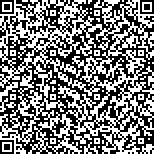下载中心
优秀审稿专家
优秀论文
相关链接
摘要

在分析干涉条纹图噪声特征的基础上, 提出了一种能有效保持干涉图条纹的边缘和细节信息的InSAR干涉图滤波算法——基于最优化融合的自适应方向平滑算法。该算法首先对8个线性方向窗口进行统计分析, 然后根据干涉图的相干性选择合适的线性方向窗口, 按照最优化融合的方法, 以方差倒数为权重对各个方向窗口的均值进行加权平均。模拟和真实干涉图数据的实验结果表明新方法不仅能有效的抑制干涉图噪声, 而且能较好的保持干涉图的细节和边缘信息, 具有很好的信息保持能力。
In this paper, we present a new InSAR phase filtering method based on optimal integration. The algorithms can preserve very well the phase details while at the same time smoothing out the noise. Firstly, we use statistical method to determine the number of windows used for the filtering. It is an empirical constant associated with coherence. Secondly, eight linear directional windows are singled out, within each window a filtering is performed, and at the same time the mean coherence for each window is calculated. The proposed filtering will linearly combine a certain number (which has been determined in the first step) of the eight directional windows. However, directional windows with smaller filtering standard deviation will be given priority. Finally, the new phase value is calculated in terms of the weighted mean value of chosen linear windows. In this step, optimal integration is used to determine the weight of each directional window. The proposed filter is adaptively implemented by altering the number of the linear windows selected for filtering according to the coherence. Strategy of using both linear windows and optimal integration makes great difference in the filtering and achieve a good tradeoff between phase noise suppressing and sig-nal preserving. Experimental results with both simulated and real data sets show that the new filter reduces the noise effectively while still minimizing the loss of signals.

